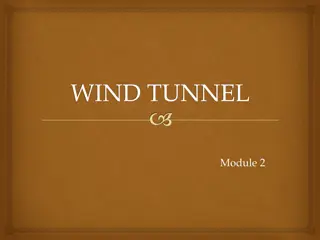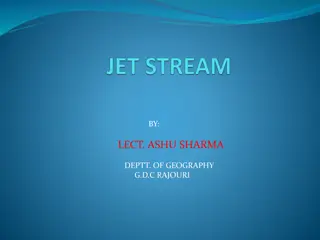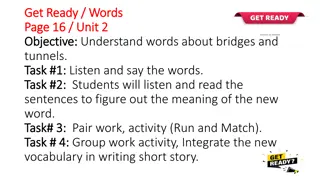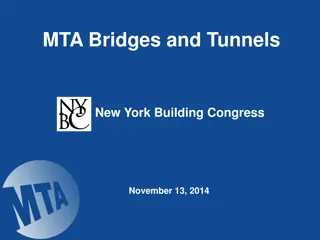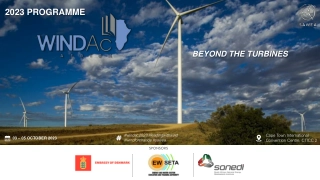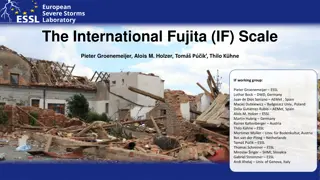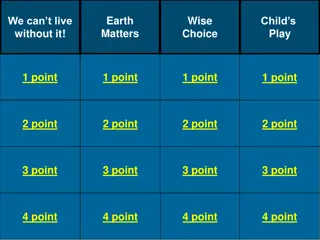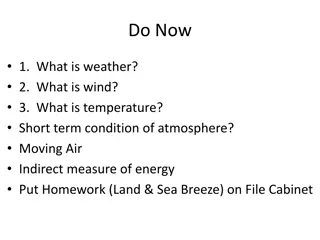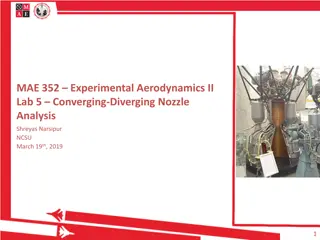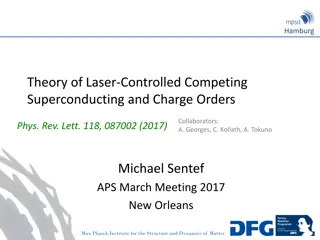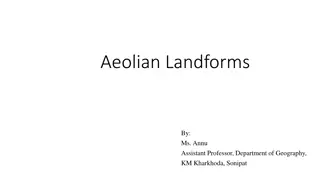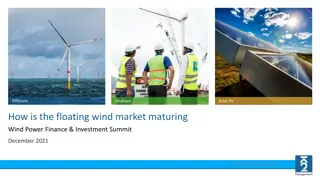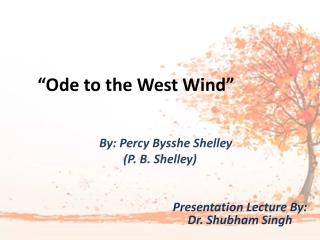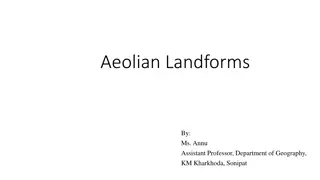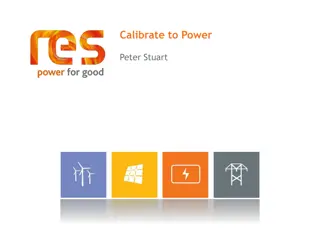Understanding Wind Tunnels: Testing Aerodynamics with Controlled Air Streams
Wind tunnels are essential devices for testing models under controlled airflow conditions. They replicate the effects of objects moving through air, aiding in aerodynamic research and design. Utilizing techniques like flow visualization with smoke and tufts, wind tunnels provide valuable insights into boundary layers, flow separation, and more.
Download Presentation

Please find below an Image/Link to download the presentation.
The content on the website is provided AS IS for your information and personal use only. It may not be sold, licensed, or shared on other websites without obtaining consent from the author. Download presentation by click this link. If you encounter any issues during the download, it is possible that the publisher has removed the file from their server.
E N D
Presentation Transcript
WIND TUNNEL Module 2
Wind tunnels are devices that provide air streams flowing under controlled conditions so that models of interest can be tested using them. From an operational point of view, wind tunnels are generally classified as low-speed, high-speed, and special-purpose tunnels. Low-speed tunnels are those with test-section speed less than 650 kmph. Tunnels with test-section speed more than 650 kmph are called high-speed tunnels. The tunnels are used to replicate the actions of an object flying through the air or moving along the ground. The wind tunnel moves air around an object, making it seem as if the object is really flying.
Most of the time, large powerful fans blow air through the tube. The object being tested is held securely inside the tunnel so that it remains stationary and does not move. The object can be a small model of a vehicle, or it can be just any part of a vehicle. It can be a full-size aircraft or spacecraft. It can even be a common object like a tennis ball. The air moving around the stationary object shows what would happen if the object was moving through the air. The motion of the air can be studied in different ways; smoke or dye can be placed in the air and can be seen as it moves around the object.
Coloured threads can also be attached to the object to show how the air moves around it. Special instruments can often be used to measure the force of the air exerted against the object. In some wind tunnel tests, the aerodynamic forces on the model are measured. In some wind tunnel tests, the model is instrumented to provide diagnostic information about the flow of air around the model. In some wind tunnel tests, flow visualization techniques are used to provide diagnostic information about the flow around the model.
FLOW VISUALIZATION SMOKE FLOW VISUALIZATION It is one of the popular techniques used in low- speed flow fields with velocities up to about 30 m/s. Smoke visualization is used to study problems such as boundary layers; air pollution problems; design of exhaust systems of locomotives, cars and ships; topographical influence of disposal of stack gases; and so on.
TUFTS It is used to visualize flow fields in the speed range from 40 to 150 m/s. This technique is usually employed to study boundary layer flow, wake flow, flow separation, stall spread, and so on. CHEMICAL COATING It is used to visualize flow with speeds in the range from 40 to 150 m/s. Boundary layer flow, transition of the flow from laminar to turbulent nature, and so on are usually described by this visualization technique
INTERFEROMETER It is an optical technique to visualize high-speed flows in the ranges of transonic and supersonic Mach numbers. This gives a qualitative estimate of flow density in the field. SCHLIEREN TECHNIQUE It is used to study high-speed flows in the transonic and supersonic Mach number ranges. This again gives only a qualitative estimate of the density gradient of the field. This is used to visualize faint shock waves, expansion waves, and so on.
SHADOWGRAPH METHOD This is yet another flow visualization technique meant for high-speed flows with transonic and supersonic Mach numbers. This is employed for fields with strong shock waves.
SMOKE TUNNEL Flow visualization with smoke is generally done in a smoke tunnel. It is a low speed wind tunnel carefully designed to produce a uniform steady flow in the test- section with negligible turbulence. Smoke streaks are injected along the freestream or on the surface of the model for visualizing flow patterns. White dense smoke is used for this purpose. When a beam of light is properly focused on the smoke filaments, the light is scattered and reflected by the smoke particles making them distinguishably visible from the surroundings
The smoke tunnel is generally used for demonstrating flow patterns such as flow around bodies of various shapes, flow separation, and the like. The quality of the flow pattern depends on the quality of the smoke used. For good results, properties of the smoke chosen should have the following qualities. o The smoke should be white, dense, nonpoisonous, and noncorrosive. o Smoke should have nearly the same density as that of the surrounding air, hence the smoke filaments are not appreciably influenced by gravity.
o Smoke particles should not disturb the flow in the wind tunnel by formation of deposits on the surface of the models or block the tubes used for smoke injection. o Production of smoke should be easily and readily controllable.
COMPRESSIBLE FLOWS For visualizing compressible flows, optical flow visualization techniques are commonly used. Interferometer, Schlieren, and shadowgraph are the three popularly employed optical flow visualization techniques for visualizing shocks and expansion waves in supersonic flows. They are based upon the variation of the refractive index, which is related to the fluid density by the Gladstone Dale formula and consequently to the pressure and velocity of the flow
For making these variations visible, three different classes of methods mentioned above are generally used. With respect to a reference ray, that is, a ray that has passed through a homogeneous field with refractive index n, the 1. Interferometer makes visible the optical phase changes resulting from the relative retardation of the disturbed rays; 2. Schlieren system gives the deflection angles of the incident rays; 3. Shadowgraph visualizes the displacement experienced by an incident ray that has crossed the high-speed flowing gas.
These optical visualization techniques have the advantage of being nonintrusive and thereby in the supersonic regime of flow, avoiding the formation of unwanted shock or expansion waves. They also avoid problems associated with the introduction of foreign particles that may not exactly follow the fluid motion at high speeds because of inertia effects. However, none of these techniques gives information directly on the velocity field. The optical patterns given by interferometer, Schlieren, and shadowgraph, respectively, are sensitive to the flow density, its first derivative, and its second derivative.
Interferometer The interferometer is an optical method most suited for qualitative determination of the density field of high- speed flows. Several types of interferometer are used for the measurement of the refractive index, but the instrument most widely used for density measurements in gas streams (wind tunnels) is that attributed to Mach and Zhender. The fundamental principle of the interferometer is the following. From the wave theory of light we have C = f where C is the velocity of propagation of light, f is its frequency, and is its wavelength.
From the corpuscular properties of light, we know that when light travels through a gas the velocity of propagation is affected by the physical properties of the gas. The velocity of light in a given medium is related to the velocity of light in vacuum through the index of refraction n, defined as ???? ???? = n The value of refractive index n is 1.303 for air and 1.5 for glass.
The GladstoneDale empirical equation relates the refractive index n to the density of the medium as ? 1 ? = K where K is the Gladstone Dale constant, and is constant for a given gas and is the gas density.
Formation of Interference Patterns Fig shows the essential features of the Mach Zhender interferometer, schematically. Light from the source is made to pass through lens L1 which renders the light parallel. The parallel beam of light leaving the lens passes through a monochromatic filter. The light wave passes through two paths, 1 2 4 and 1 3 4, before falling on the screen, as shown in the figure. The light rays from the source are divided into two beams by the half-silvered mirror M1. The two beams, after passing through two different paths (the lengths of paths being the same) recombine at lens L2 and get projected on the screen.
The difference between the two rays is that one (134) has traveled through room air whereas the other (1 2 4) has traveled through the test-section. When there is no flow through the test-section, the two rays having passed through identical paths are in phase with each other and recombine into a single ray. Thus, a uniform patch of light will be seen on the screen. Now, if the density of the medium of one of the paths is changed (say increased) then the light beam passing through will be retarded and there will be a phase difference between the two beams. When the magnitude of the phase difference is equal to /2, the two rays interfere with each other giving rise to a dark spot on the screen.
Hence, if there is appreciable difference in the density the picture on the screen will consist of dark and white bands, the phase difference between the consecutive dark bands being equal to unity. A interferogram of a two-dimensional supersonic jet is shown in Figure . It is seen that, far away from the jet axis, the fringes (dark and white bands) are parallel, indicating that the flow field is of uniform density (in this case, the zone is without flow). The mild kinks in the fringes are the locations of density change. Those who are familiar with free jet structure can easily observe the barrel shock, the Mach disk, and the reflection of the barrel shock from the Mach disk.
Interferogram of a two-dimensional supersonic jet at M = 1.62
SCHLIEREN SYSTEM The Schlieren method is a technique for visualizing the density gradients in a transparent medium. Figure shows a typical Schlieren arrangement, usually employed for supersonic flow visualization. Light from a source is collimated by the first lens and then passed through the test-section. It is then brought to a focus by the second lens and projected on the screen. At the focal point of the second lens, where the image of the source is formed, a knife-edge (which is an opaque object) is introduced to cut off part of the light. The screen is made to be uniformly illuminated by the portion of the light escaping the knife-edge, by suitably adjusting it to intercept about half the light when there is no flow in the test-section.
For the sake of simplicity, for instance, let us assume the test-section to be two dimensional, with each light ray passing through a path of constant air density. When flow is taking place through the test-section, the light rays will be deflected, because any light ray passing through a region in which there is a density gradient normal to the light direction will be deflected as though it had passed through a prism. In other words, if the medium in the test-section is homogeneous (constant density) the rays from the source will continue in their straight-line path. If there is a density gradient in the medium, the rays will follow a curved path, bending toward the region of higher density and away from the region of lower density.
Therefore, depending on the orientation of the knife-edge with respect to the density gradient, and on the sign of the density gradient, more or less of the light passing through each part of the test-section will escape the knife- edge and illuminate the screen. Thus, the Schlieren system makes density gradients visible in terms of intensity of illumination. A photographic plate at the viewing screen records density in the test-section as different shades of gray.
SHADOWGRAPH On the Schlieren system the positions of the image points on the viewing screen are not affected by deflections of light rays in the test-section. This is because the deflected rays are also brought to focus in the focal plane, and the screen is uniformly illuminated when the knife-edge is not inserted into the light beam. On the other hand, if the screen is placed at a position close to the test-section, the effect of ray deflection will be visible. This effect, termed the shadow effect, is illustrated in Figure.
On the screen there are bright zones where the rays crowd closer and dark zones where the rays diverge away. At places where the spacing between the rays is unchanged, the illumination is normal even though there has been refraction. Thus, the shadow effect depends not on the absolute deflection but on the relative deflection of the light rays, that is, on the rate at which they converge or diverge on coming out of the test-section.
A shadowgraph consists of a light source, a collimating lens, and viewing screen, as shown in Figure. Let us assume that the test-section has stagnant air in it and that the illumination on the screen is of uniform intensity. When flow takes place through the test-section the light beam will be refracted wherever there is a density gradient. However, if the density gradient everywhere in the test-section is constant, all light rays would deflect by the same amount, and there would be no change in the illumination of the picture on the screen. Only when there is a gradient in density gradient will there be a tendency for light rays to converge or diverge.
For a two-dimensional flow the increase of light intensity can be expressed as where k is a constant and x and y are the coordinates in a plane normal to the light path. Therefore, the shadowgraph is best suited only for flow fields with rapidly varying density gradients. A typical shadowgraph of a highly underexpanded circular sonic jet is shown in Figure. Because the jet is underexpanded, the waves present in the field would be strong enough to result in a large density gradient across them.
One such wave termed Mach disk, normal to the jet axis, is seen in the field. The Mach disk is essentially a normal shock and hence, the shock has a positive and negative rate of change of density gradient across it. Therefore, the shock is made up of a dark line followed by a bright line in the shadow picture, in accordance with the shadow effect. Shadowgraph of an underexpanded sonic jet operating at nozzle pressure ratio 6.


